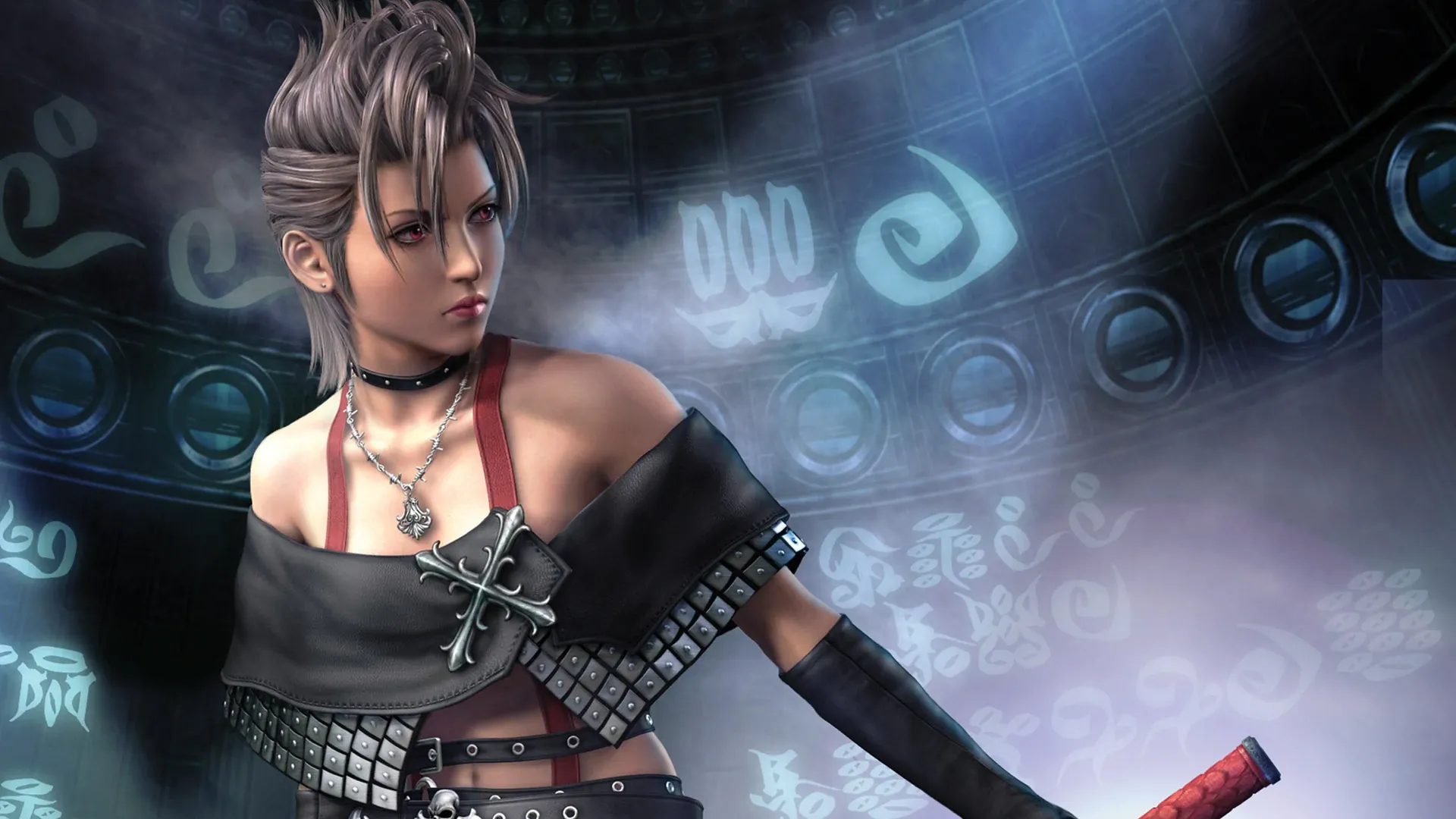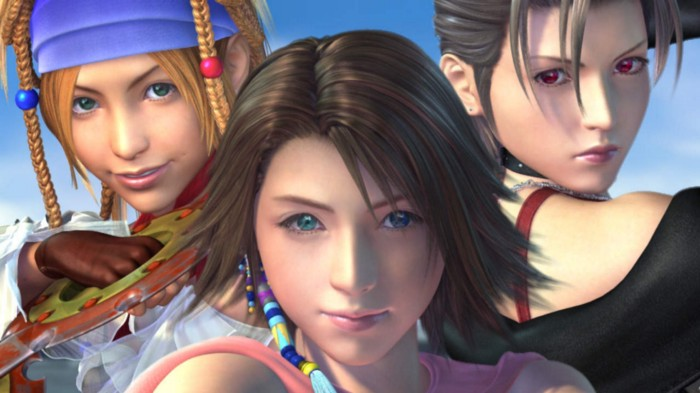Final Fantasy X-2, and Recovering After the Fall
The Sphere Hunters’ dystopian romp is much more than just “the girl Final Fantasy”

One of the greatest flaws of capitalism is the inability of people within its systems to imagine a world after it.

Post-Society
Video games love to imagine dystopian or near-dystopian worlds. RPGs especially love to tackle inhuman atrocities with inhuman methods — they regularly task players with fighting against fascist governments, corrupt religions, and ultra-powerful reality-decimating beings. Final Fantasy X had much more to say than simply bringing down an Amano-designed super-being. It was a game about loss and survival, a game in which the characters coexisted with horrific structural problems in a society that regularly tried to eradicate them, whether it was the decimation of Sin or the toxic influence of Yevon.
The people of Spira grew so used to the cycle of life and death that they never imagined what the next society might look like, even if they did put all their hopes and dreams on the backs of dead Summoners.
In Final Fantasy X-2, we are given a glimpse into something that is not often tackled by RPGs — what do we do after we save the world? Our real-world issues are emblematic of this question, where those of us who fight for actionable change constantly need to question our motives in the struggle. Once we end capitalism, once no one else is no longer hungry or without healthcare, once the billionaires are thwarted and the evils of industry are expunged, what do we do? If we were to wipe out our Sin in an instant, what would happen next? Would we celebrate in the streets or would we watch society crumble?
If we can eschew the toxicity of warped religions and the corrupting influence of a business-driven state, can we accomplish anything we want?
Yuna: “The Eternal Calm. I can feel it crumbling from beneath our feet.”

Too often, the version of the apocalypse we are shown in games, books, TV shows, and movies is one that doesn’t have as much to do with “the end of the world” as it does “the end of capitalism.” In eco-friendly narratives, eco-fascists often decry all of humanity as a virus or parasite that cannot live in conjunction with the cycles of the planet (despite the fact that the years of human existence predating capitalism prove that human cohabitation in the natural world is beyond possible).
In Final Fantasy VII, AVALANCHE seeks to rid the planet of the evils of Shinra, to stop this capitalist machine of a titanic and impossible industry from sucking the world dry of the life-giving Lifestream. It’s a game that closely examines rebellion, resistance, and human response, but in the post-Final Fantasy VII film Advent Children, the characters are stuck in the loop of combat, whittling away at Sephiroth look-alikes instead of spending their time figuring out a way to nurture the planet post-Shinra.
Final Fantasy X ends with a bang. Sin is destroyed. Yevon is eradicated, and with it, its religion crumbles to nothing. The last glimpse of Spira that we are granted is one of rebuilding, its ending a unified celebration a la Star Wars. There are infinite possibilities for the future, and as Yuna asks that we remember the fallen in her iconic and heartfelt denouement, the players are stunned into imagination. Anything is possible.
Spira is free.
Final Fantasy X-2 returns asking the question: What do we do after we’ve won?

A Different Kind of Future
Eliminating the need for further imagining, Final Fantasy X-2 released 18 years ago to answer the lingering questions left by Final Fantasy X and become the first major sequel in the franchise’s history. It would also be the first Final Fantasy game with a party comprised only of female members, as Y.R.P. (Yuna, Rikku, and Paine) are the eponymous Sphere Hunters, a group of mercenary-historians who fly across Spira looking for glowing records of the past.
What is immediately present in Final Fantasy X-2 is its impressive change of vibe. Without Sin and Yevon, Spira feels lighter. Its people are happy, their populaces no longer chained to spending each and every day wondering if it was going to be their last. They are no longer tethered to the movements of Yevon or the orders of the church, and they no longer have to spend their time worrying over Summoners, Guardians, and the Calm. Spira is, in essence, freed. Despite this general time of joy and peace, it wouldn’t be an RPG without some kind of struggle, and the one it brings is extremely human.
This future is monumentally different from the one we are typically presented with, in nerd media. In Nausicaä of the Valley of the Wind, humanity destroys itself through war and a toxic natural world seeks to expunge all human life. In I Am Legend, society implodes after a horrific virus wipes through us like fire in a field. Final Fantasy X-2 exists about as far afield from Cormac McCarthy’s The Road as a dystopian piece of fiction can, and because it eschews our common expectations about a glimpse into the post-future, it’s difficult for us to truly see the game as dystopian. Final Fantasy X-2 looks at a world where, after the fall of known civilization, we come together with plans for a brighter future instead of immediately giving in to the anti-humanist trope of societal despair.

Working Together
Final Fantasy X-2 is a game about centralized conflict, but not the sort of conflict we are used to seeing in an RPG. The big bad isn’t a world-ending monster or an impressive imperial force (though one does show itself after a while; this is still an RPG), but instead the average disagreements that different sentient factions have when it comes to rebuilding their lives. X-2’s Spira is split over how to properly move on after the collapse of culture and society, and their rebuilding efforts are split almost entirely down the middle between the younger generation’s drive for progress and the older generation’s demand for tradition. A New Yevon religion is crafted almost immediately. The vultures of culture view Spira as ripe for the picking because without Sin they can embark on a new era of exploration. In their pursuit of new permaculture, the friction that’s created within the groups and ideologies is what sparks Yuna’s drive to continue helping Spira, despite wanting to simply let her hair down and fly through the sky.
Yuna, Rikku, and Paine all have their own personal views of this future and how they might exist in it. Yuna, having survived the ultimate sacrifice, is goaded by her friends to do nothing but have fun and see the world through new eyes. Rikku, who faced religious persecution, racism, and xenophobia in Final Fantasy X, now exists in a world where her people’s culture is sought after and demanded. Paine joins them because her future is one of healing, where she might finally escape a past riddled by PTSD and seek out some part of herself triumphantly in this new world.
In the midst of this challenge of purview, the regular people are caught. As Y.R.P. trek across the well-known and beloved locales of Spira, we are given a poignant look at how normal folks are adapting to their new future. They’re not interested in the Youth League or New Yevon or whatever other cultist bullshit has grown from the power vacuum; they simply want to live their lives. There will never again be a Kilika massacre, there will never again be evil like Yunalesca or Seymour. However, caught in this tangle lies the chance for society to once again fall back into its traps of manipulation, corruption, and evil. Despite wanting to have a relaxing and joyful time after her struggles as a Summoner, Yuna recognizes that there is too much hard work to be done. The fight for progress never rests, even for a pop celebrity.

The Power Dynamics of the People
There are plenty of aspects of Final Fantasy X-2 that examine the power vacuum, even if it’s subtle. The game’s version of democracy, anarchism, socialism, and communism are apparent in how each celebrity character and cult leader makes their case for the future known. Outside of the heads of New Yevon and the Youth League are more nefarious smaller acts that simply want to build their place among Spira’s opportunities, racing to make as much money as they can in the fallout of the old culture. This future is the wild west, and everything from the economy to housing is in proper shambles. Characters have already begun to transform the ruins of Zanarkand into a theme park; others have set up shop in the middle of the desert in order to dredge up lost artifacts of old Spira. There is no ceremony or reverence in the future, and the colorful attraction of lawlessness is how sweet and freeing blasphemy tastes. Yuna finds herself taken aback by the raw nature of many reactions, despite being the person responsible for the destruction of Yevon. She must contend with the fact that despite risking her life for this structural change, she is still human and is a person of mixed emotion.
The people who disregard Final Fantasy X-2 as a frilly “girl gang” romp not only do a disservice to what this game actually is but also present a disingenuous and misogynistic argument against one of the most unique entries in the entire Final Fantasy franchise. Like every main entry, it’s a game with something to say, and that something spans the entirety of the human condition. All of us — especially in our current climate — daydream of a better society and what might await us in the next world. We may not be stuck in the cycle of Sin’s Calm or the Dreams of the Fayth, but we are trapped by the ever-turning gears of capitalism, forced work, unchecked industry, and heartless governments. The only way that any of us can possibly attain change is to work together and hear out the differing possibilities for the future, whether they’re the aggressively modern ideals of the Youth League, the calls for traditionalism of New Yevon, or something chaotic in-between.
What we are left with is a Spira that is exciting, attractive, and frightening. We spend so much of our time in RPGs railing against the obvious big bad that we forget the core tenets of the human condition, and how the real struggle only begins after we’ve brought down our unified menace. Final Fantasy X-2 is an extremely fun, lighthearted game that wants the players to actually consider a society in post, to imagine a world that we can continue fighting for.

Yuna: “No. I don’t want this anymore. I don’t want friends to die… or fade away. I don’t want battles where we have to lose in order to win.”
After 18 years, Final Fantasy X-2 deserves much more than to be remembered only as a sequel to the impressive Final Fantasy X, but it also deserves to be ruminated over as more than just the “girl game” of the franchise. If you’ve only ever seen Final Fantasy X-2 as a game about a pop star going on an action-filled romp with her girlfriends, it could be time to give it a shot and see what this game truly has to offer.
